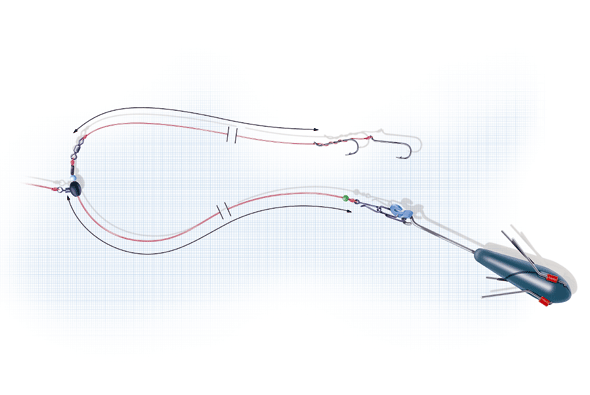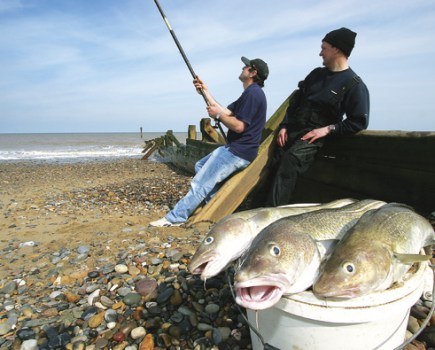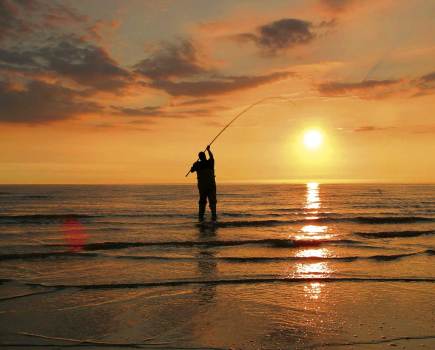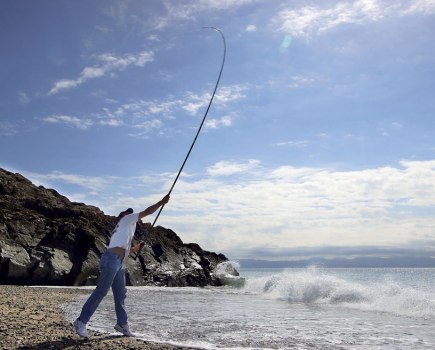This is not the place that put the ‘ease’ in Easington. Cinderella Rock, with all its connotations of glass slippers and romance is actually more like something from ‘Who Dares Wins’.
Calling for tricky climb, it leaves you stranded by the tide for an hour or two, when you must steer clear of its crumbling edges and brace yourself for a drenching if you’ve misread the weather forecast.
If you’re lucky, the locals on the cliffs just look at you: unlucky, and they throw things. Then when you’re done and the tide’s gone out, there’s another tricky climb back down. Don’t all rush at once.
One man who swears by it, however, is Wayne Harriman. Since childhood, the local match angler has watched the Rock surrender gradually to the sea, its teeth ironically sharpened by the same demise of mining that has otherwise had such a mollifying effect on these County Durham beaches.
“High tide once fell 150 yards short of the Rock but when the tipping of colliery waste stopped, there was nothing filling up the beach any more and the sea advanced,” he explains.
Now high water surrounds it, leaving 20ft of water between you and the mainland. A 100yd cast from its top is equivalent to 250yd from the beach behind it. Wayne has had cod to 8lb here and the average is 2lb 8oz. Coalfish in the region of 1lb 8oz are available, along with whiting, flatties and eels.
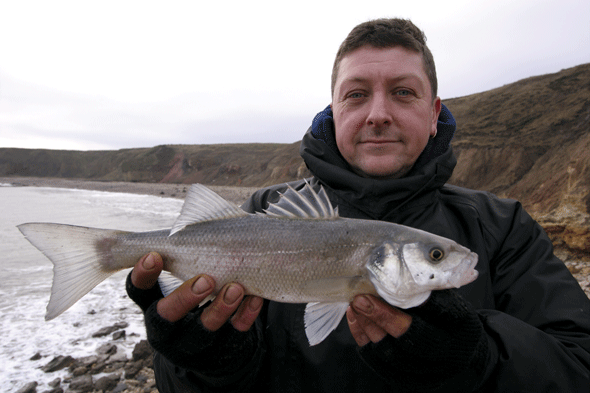
Not for the faint hearted
So let’s break down the challenges of Cinderella Rock one by one.
Firstly, with the best time for fishing being the last three hours of the flood and first two of the ebb tide, you need to be absolutely sure there are no psychological skeletons in your cupboard where being cut off by the tide is concerned.
Avoiding such a fate is so heavily ingrained in any shore angler that consciously embracing it for once might not be an easy mental U-turn.
Wayne Harriman admits to loving the solitude as the tide seals him off from the mainland but if you’ve ever felt your hands go clammy while watching ‘Robinson Crusoe’, this might not be your type of mark.
Even if it is, don’t forget to take a good book with you, in case it turns out to be one of those days when the fish aren’t interested. You can’t just pack up and leave this mark.
Next – and this is crucial – you need to have studied the weather beforehand as thoroughly as if you were going out on a boat.
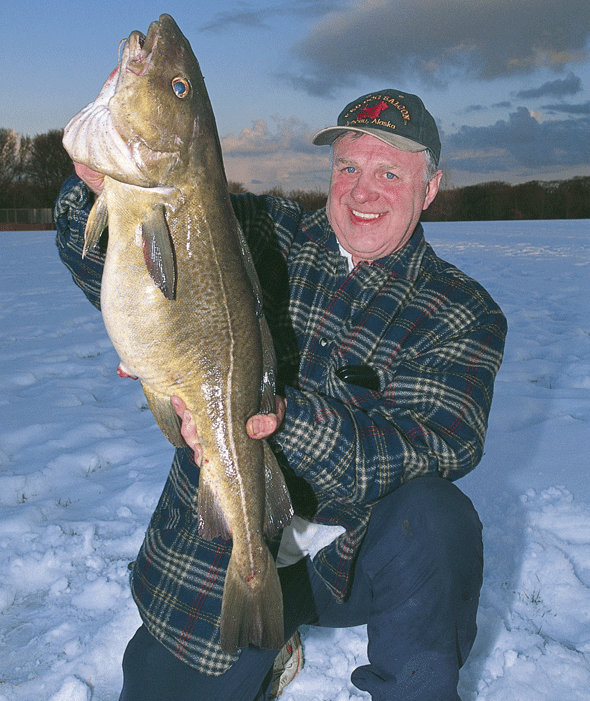
Winter venue
“I like fishing there when the water is just running off after a big sea and you watch the big swells rolling by but it’s only fun if the wind isn’t a northerly,” Wayne cautions. “If there’s a northerly and it’s a big sea the waves will explode on the front of the Rock and you’ll be soaked. A dying northerly is ideal for fishing but you have to be certain the wind is dropping.”
The cliffs behind provide an effective windbreak to anything coming from the west, north-west or south-west, as well as providing the perfect vantage point for spectators. Sadly, the latter point is not always good news. On one occasion, Harriman had two juveniles throwing stones at him while he fished the Rock.
There is room for three anglers on the Rock, four at a pinch but beware that this is a sandstone feature that had a 20ft high pinnacle not so long ago. Erosion takes its toll and the edges can crumble.
“You all need to know what you’re doing,” Harriman confirms. “If there’s a small group, everyone tends to set up to the left to make casting room available.”
The Rock is primarily a winter mark and local matchmen all head elsewhere for their fishing ‘fix’ when spring beckons (which does, however, clear the way for some good mackerel fishing here during the summer).
The winter season extends from late September to early March if conditions are favourable.
“You have 10ft of water in front of you at high tide and directly in front the ground is very heavy, although less so to either side, say at 10 o’clock and two o’clock,” Harriman continues.
The mark will fish in any size of tide but as previously advised you do need to know from which direction the wind is coming. And if all this is not quite challenging enough, Wayne calmly informs us that the mark can also fish very well in the dark.
“I once had 18 codling of about a pound-and-a-half each one night,” he recalls. “And I was catching them two at a time.”
The fact that it’s not everyone’s cup of tea as marks go does work in favour of Cinderella Rock’s regulars, however. You may occasionally find that someone has beaten you to it but it is not heavily in demand, even among match anglers fishing a local rover competition.
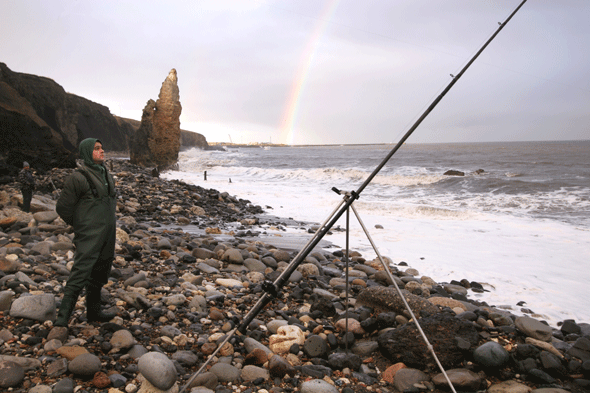
Tackle and bait
“I fish a Greys Platinum beachcaster and a Penn 525 reel loaded with 20lb line and a shockleader,” says Wayne.
“I’ll use a one- or two-hook clipped rig, although you can make do with a two-hook flapper for whiting and codling if they’re close in, say 60yd off the Rock. Unless the water is fl at and clear, though, you need to cast about a hundred yards.”
He uses 6oz plain or grip leads and size 1 to 3/0 hooks, opting for a Pennell set-up on his clipped rigs. Rotten bottoms are essential: not only is there rocky ground out there but Easington’s mining tradition has left all manner of mechanical bits and pieces embedded in the sea floor.
“As far as bait goes, it’s crabs from September until mid or late November and then lugworms until the end of the season,” Wayne adds.
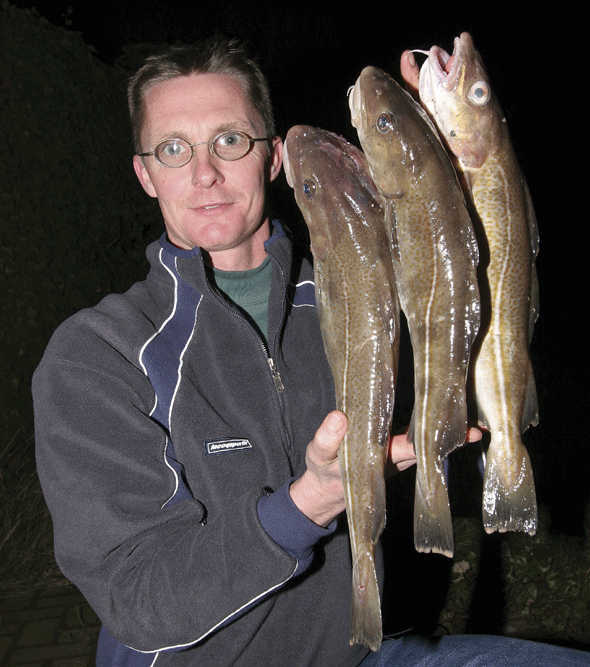
Other marks
Should an unfavourable wind, vertigo or a phobia for being marooned put Cinderella Rock out of your reach, however, fear not, for there is still good fishing to be had from more conventional marks along Easington beach.
Just to the right of the Rock, parallel with it, is the Lime Hole. Once a prodigious flounder mark, much of the sand in the hole has been washed away but it can still hold fish.
Three hundred yards further south of the Lime Hole is The Twelve Foots, (“My dad used to swim there and he’d dive off these rocks into about 12ft of water, so I assume that’s where the name comes from!” says Wayne) a group of low rocks that can be fished at low water.
On the northern side of Cinderella Rock, meanwhile, is the Old Flight mark, a sandy bay adjacent to the Old Flight itself, where colliery waste was once tipped.
“This is another good flounder mark,” explains Wayne, “but there is a deep gully about 60yd in front of you at low tide that can hold a lot of codling.”
Getting there
From the south: leave the A1(M) at J49 and follow the A168 and A19 which take you through Middlesbrough and past Hartlepool and Peterlee. In Easington, leave the A19 for the B1283 (Hall Walks, Rosemary Lane and Seaside Lane) to Easington Colliery.
From the north: leave the A1(M) at J62 for the A690 towards Durham. Turn left onto the A181 at Gilesgate Moor and just before Sherburn bear left onto the B1283 for Easington, which will take you into Easington Colliery.
Parking is available on the site of the former colliery. From here a footpath takes you on a 15-minute walk to the beach. At the cliff top, you will see Cinderella Rock to your left.


